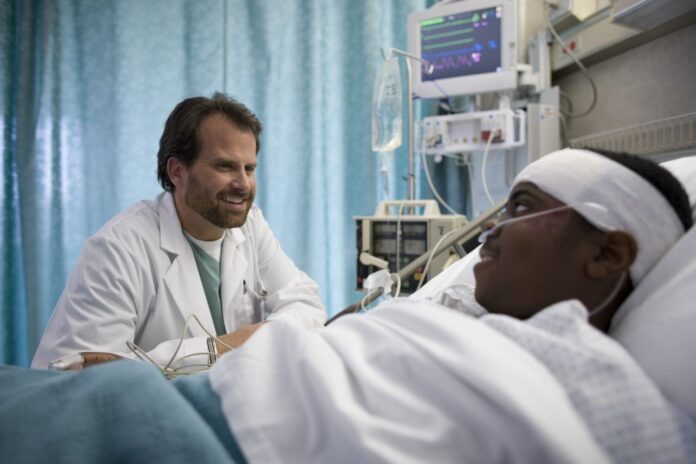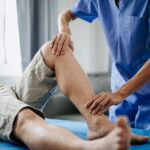A surgical procedure is an easy thing to dread. Whether it’s you going under the knife, or someone close to you, it’s easy to spend the days and weeks leading up to the event thinking about exactly what’s going to happen when you get to the hospital.
But it’s worth also thinking about what’s going to happen as you recover from the procedure. After all, that’s the phase that you actually have control over. There are a few steps you might take to make life easier during this period and to aid the recovery process.
Frequently Asked Questions
After the surgery, you’ll want to know exactly how the operation went. Make sure that you have in mind a few questions for when you come around. The first and most obvious question might be: ‘did the operation go as expected?’, but you should also ask about the prognosis for recovery. You might want to take notes – or even (with permission) film the conversation.
Following Medical Aftercare
Every surgical procedure is different, and thus to an extent, your recovery will be tailored to your needs. Some people will be able to get back to normal relatively quickly and with minimal intervention. Others will need to be cared for more stringently.
Your doctor should provide you with the appropriate treatment after your surgery. If they fail to do so, then complications may result. This is a rare situation, but medical professionals who make this sort of error leave themselves vulnerable to surgical error claims.
Avoiding Blood Clots
If you’re spending the recovery period lying in bed, then you put yourself at risk of blood clots – because blood will naturally pool in your legs. As soon as it’s reasonably possible, you should perform preventative exercises. This might mean simply flexing and rotating your legs.
Other anti-clot measures include support stockings and blood thinners. Again, you should be provided with whichever treatment is appropriate.
Aiding Recovery
In general, the sooner you can be up and active again, the more quickly and safely you’ll recover. This doesn’t mean rushing, however – moving too fast and you’ll risk causing a setback. Short walks, being mobile around the home, and eating and drinking will all help. Build your strength back up gradually. If you’re in doubt over whether you should be doing something, then it’s best to listen to your body and err on the side of keeping a little bit mobile!
Preparing for Home
We should also think about the first minutes and hours after you are discharged from the hospital. You’ll want all of the appropriate equipment and care in place ahead of time. This might mean walking sticks, frames or wheelchairs. Most importantly, you should have a means of getting home. You won’t want to be driving!
Read Also
- A Guide to Specialized Healthcare: Experts in Addiction Recovery, Orthopedics, and Cosmetic SurgeryIntroduction to Specialized Healthcare Finding the right expertise is crucial when facing health challenges. General care is important, but sometimes, you need a deeper level of knowledge. Specialized healthcare can offer more precise solutions and better results. It means connecting with experts who focus on specific areas of medicine. Navigating the healthcare system can be… Read more: A Guide to Specialized Healthcare: Experts in Addiction Recovery, Orthopedics, and Cosmetic Surgery
- When Health Care Feels Personal Again — The Clinic Model That’s Making a Difference in WilmingtonWhen your doctor remembers your name, something shifts. Health care feels impersonal for many: crowded clinics, brief visits, and records that don’t connect people to consistent care. In Wilmington, community clinics pair patients with steady teams and shared records so appointments build on what came before. Those clinics are bringing physical and mental health into… Read more: When Health Care Feels Personal Again — The Clinic Model That’s Making a Difference in Wilmington
- Cellular Tissue Allografts for Regenerative Healing SupportHave you ever wondered how the body can naturally restore damaged tissue and speed up recovery? Medical science has advanced to harness this remarkable ability through innovative biological therapies. Among these, cellular tissue allografts are emerging as a key method in regenerative healing. These grafts use naturally derived materials to promote repair at a cellular… Read more: Cellular Tissue Allografts for Regenerative Healing Support
- Balancing Mobility and Comfort with Chiropractic ScienceSetting the Stage for Spinal Wellness The spine is your structural command center. Without it, mobility collapses and comfort erodes one vertebra at a time. Modern work habits grind it down: hours hunched at a desk, eyes locked to screens, bodies repeating the same micro-movements until muscles rebel. This chronic strain bleeds into productivity, mood,… Read more: Balancing Mobility and Comfort with Chiropractic Science
- Discover Comfortable Assisted Living Options for SeniorsGrowing older brings changes, but it also opens doors to new beginnings. For many seniors, it’s a time to trade the stress of upkeep and isolation for peace, safety, and connection. Assisted living isn’t about giving up independence-it’s about gaining support that allows life to be enjoyed fully, without worry. Finding the right place means… Read more: Discover Comfortable Assisted Living Options for Seniors
- From Silence to Support: Mental Health in Older GenerationsDid you know that some adults aged 65 and older feel very sad or worried, just like younger people do? Many of them keep these feelings to themselves and don’t ask for help. This can make them feel even more alone. Sometimes, people are afraid to talk about mental health because they think others won’t… Read more: From Silence to Support: Mental Health in Older Generations
- Healthy Living Tips Every Senior Should Know for VitalityGrowing older brings new ways to enjoy life with balance and grace. Every choice made each day can shape how strong and lively one feels. Simple changes can lead to a brighter, more active lifestyle. Health at any age is about keeping the body and mind connected. It’s about living each day with purpose, ease,… Read more: Healthy Living Tips Every Senior Should Know for Vitality








